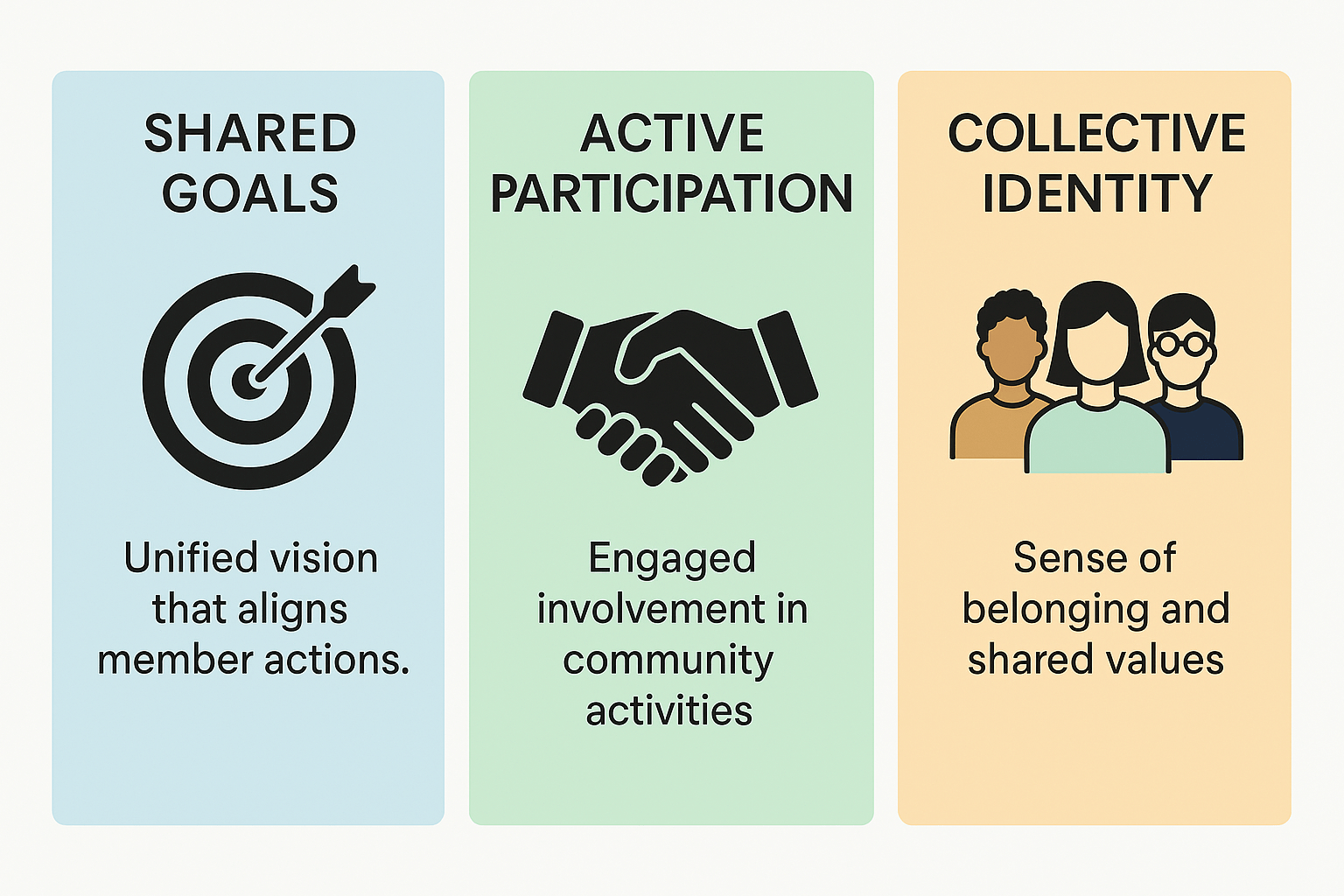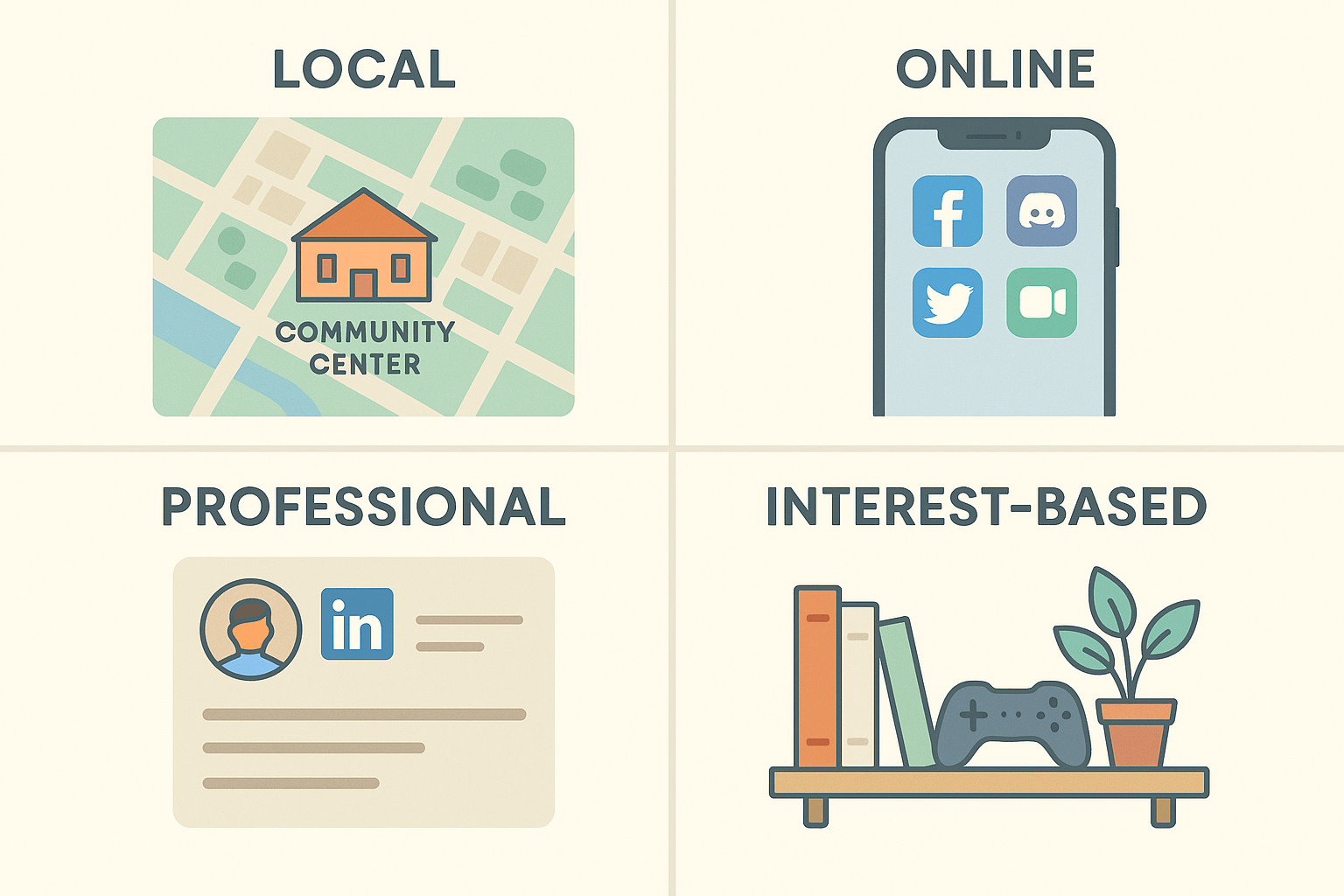Introduction: Community Building Overview
Community building is the process of creating, nurturing, and sustaining relationships among individuals who share common goals, values, or interests. It plays a central role in fostering trust, mutual understanding, and collaboration across various sectors such as education, business, and social development.

The ability to build communities ensures a supportive environment where individuals can connect, collaborate, and contribute toward shared objectives. In today’s interconnected world, community building extends beyond physical spaces into digital platforms, allowing people from different geographic and cultural backgrounds to unite under common causes. Understanding its principles, importance, and methods can help create lasting and impactful communities.
What Is Community Building? Definition and Core Concepts
Community building refers to the structured process of developing relationships, fostering trust, and creating a sense of belonging among individuals. It is driven by shared interests and mutual goals, facilitating collaboration and collective action. Community building operates within social, business, and digital contexts, each with unique dynamics yet similar foundational principles.
In a social context, community building revolves around strengthening interpersonal relationships and creating support systems. This can be seen in neighborhood associations, local charities, and volunteer organizations where members engage in activities that benefit the group.
In a business context, organizations build communities by nurturing customer relationships through brand engagement and customer loyalty programs. Digital platforms play a crucial role by hosting online forums, social media groups, and virtual communities where people connect regardless of their physical location.

The core elements of community building include shared goals, active participation, and collective identity. Members contribute through communication, trust-building, and cooperative problem-solving. A well-structured community ensures that all voices are heard, creating a space where everyone feels empowered and valued.
Why Is Community Building Important? Benefits and Impact
Community building holds immense significance due to its social, economic, and cultural benefits. It fosters environments where individuals can experience emotional support, practical assistance, and a sense of purpose.
One of its primary benefits is the creation of social capital, networks of trust and reciprocity that drive collective action and mutual aid. For example, local communities that organize neighborhood watch programs can reduce crime rates through collective vigilance.
Economic growth also stems from community-driven initiatives such as crowdfunding campaigns, cooperative businesses, and local enterprise support networks. When businesses support community events, they build brand loyalty and generate a positive social impact.
Another essential aspect of community building is its role in civic engagement and advocacy. Communities mobilize around important causes, amplifying voices that might otherwise go unheard. For example, advocacy groups that campaign for social justice reforms rely on well-organized communities to drive policy change and raise public awareness. In this sense, community building becomes a platform for social empowerment and societal progress.
Types of Communities
Communities can be broadly categorized into several types based on their purpose, structure, and interaction modes. Understanding these categories can help identify strategies for building and sustaining meaningful relationships.

Local communities exist within defined geographic areas such as towns, neighborhoods, or villages. They thrive on face-to-face interactions and are often centered around shared public resources such as schools, parks, and community centers. In such communities, social bonds are reinforced through events like festivals, clean-up drives, and cultural celebrations.
Online communities, on the other hand, transcend physical boundaries and connect individuals through digital platforms. Social media groups, online forums, and interest-based websites allow people from different parts of the world to collaborate on shared interests. For example, tech enthusiasts gather on platforms like Reddit or GitHub to share knowledge and solve technical problems.
Professional networks are another vital category. These communities bring together industry professionals to share expertise, explore career opportunities, and build industry-specific connections. LinkedIn, for instance, serves as a global professional networking platform where members can expand their professional reach through strategic connections.
Interest-based communities revolve around hobbies, causes, or specific areas of interest. Book clubs, gaming communities, and environmental advocacy groups are examples of such communities that thrive on shared passion and engagement.
How to Build a Community: Community Building Strategies
Building a community requires a strategic approach involving purposeful actions aimed at fostering connection, participation, and sustainability. The first step is defining the community's mission and goals. A clear purpose provides direction, aligns member expectations, and sets the foundation for engagement.
Leadership plays a critical role in community development. Community leaders facilitate discussions, mediate conflicts, and ensure that goals are met. Effective leaders inspire participation, promote inclusiveness, and adapt strategies to changing needs. A collaborative leadership model often yields the best results, as it encourages shared responsibility among members.
Communication is another essential pillar. Transparent, open, and consistent communication ensures that members stay informed and engaged. This can include newsletters, social media updates, and regular community meetings. In online communities, platforms such as Slack or Discord enable real-time communication and collaboration.
Engagement strategies are vital to keeping community members active and motivated. Organizing events, workshops, and collaborative projects fosters a sense of ownership and pride among members. Fundraising campaigns and volunteer opportunities also strengthen member involvement by offering meaningful ways to contribute.
Finally, communities must continuously adapt to evolving needs. Conducting member surveys, soliciting feedback, and hosting brainstorming sessions can help identify areas for improvement. A dynamic and responsive community is more likely to thrive and achieve long-term sustainability.
Challenges in Community Building: Common Obstacles and Solutions
Despite its numerous benefits, community building comes with its own set of challenges. One significant hurdle is conflict management. Disagreements are inevitable in any group setting, and unresolved disputes can weaken community bonds. Implementing conflict resolution mechanisms such as mediation and facilitated dialogue can help maintain harmony.
Participation barriers are another challenge. Busy schedules, lack of interest, or limited access to technology can hinder active involvement. Communities can address these issues by offering flexible participation options such as virtual meetings, recorded events, and community message boards.
Resource allocation also poses challenges, particularly for grassroots organizations with limited funding. Transparent budgeting practices and community-led fundraising efforts can alleviate financial constraints. Similarly, volunteer management systems can ensure that tasks are distributed fairly, preventing burnout among key members.
Trust issues can also erode community cohesion. Trust takes time to build but can be lost quickly due to broken promises or miscommunication. Establishing clear expectations, delivering on commitments, and fostering a culture of accountability can strengthen trust over time.
Conclusion
Community building remains a fundamental social process that promotes human connection, economic progress, and societal well-being. As the world becomes increasingly interconnected, the future of community building will be shaped by digital innovation, global collaboration, and cultural diversity.
Emerging trends such as virtual reality-based community platforms and AI-driven engagement tools promise to redefine how communities form and function. However, the core principles of trust, shared purpose, and collective action will continue to guide effective community building practices.
FAQs on Community Building
1. What is the first step in community organizing and building?
The first step in community organizing and building is defining the community’s mission and goals. A clear mission provides direction, aligns member expectations, and establishes a common purpose.
This process involves identifying key issues the community wants to address and setting achievable goals that resonate with potential members. For example, a community focused on environmental advocacy might set a mission to reduce plastic waste in their local area.
Establishing a shared vision ensures that every activity and decision within the community aligns with its core purpose, creating a strong foundation for long-term success.
2. What is one tactic to ensure success in community building?
Consistency in engagement is one of the most effective tactics for ensuring success in community building. This involves maintaining regular communication, organizing events, and fostering active participation.
Communities thrive when members feel valued and connected, which can be achieved through activities like virtual meetups, social campaigns, and collaborative projects. For example, a professional networking group can ensure engagement by hosting monthly webinars or career development workshops.
Consistency builds trust and encourages members to remain actively involved, fostering a dynamic and resilient community.
3. What is the role of technology in community building?
Technology plays a crucial role in modern community building by connecting people across geographic and cultural boundaries.
Digital platforms such as social media, messaging apps, and community forums enable real-time interaction, allowing members to collaborate, share ideas, and participate in events without physical limitations.
For example, platforms like Orgo, Slack, Discord, and Facebook Groups facilitate ongoing discussions and community-wide announcements. Additionally, emerging technologies like AI-driven engagement tools and virtual reality environments provide innovative ways to enhance interaction, ensuring that digital communities remain vibrant, inclusive, and future-ready.